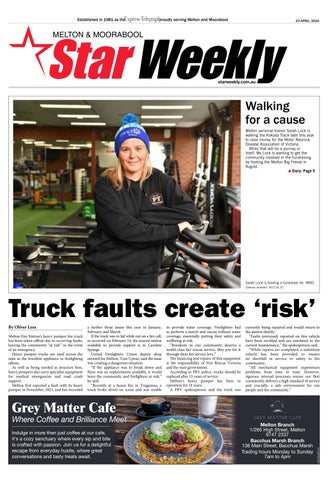Nearly three quarters of Melton and Moorabool residents are overweight or obese, according to a new study.
The Australian Health Tracker states 74.3 per cent of Melton – or 67,725 people – is considered overweight or obese, the highest percentage of any council area in the state.
Moorabool was not far behind, with 73 per cent of residents considered overweight or obese, above the national average of 66 per cent.
Professor Rosemary Calder from health policy think tank, the Mitchell Institute at Victoria University, said action was needed to focus prevention strategies in the most disadvantaged communities.
“We have spent too long as a nation expecting individuals to be able to change their behaviour to reduce their weight,” Professor Calder said.
“However, the evidence is very clear that this has little chance of success without a very strong focus on the environmental factors in the places where we live that contribute to poor nutrition and inactivity.”
Obesity in Australia has risen 27 per cent in the past 10 years to almost a third of the population.
Professor Calder said places with the highest rates of obesity also have much higher rates of smoking, inactivity and chronic illness and are largely low-socioeconomic communities, highlighting the impact of poverty on health.
“Local governments are critical to local planning and the creation of healthy and active spaces for their residents. However, they are often hampered by lack of funding and regulatory power,” she said.
In contrast to Melton and Moorabool, leafy eastern municipalities Boroondara (14.5 per cent), Stonnington (15.5 per cent), and Yarra (16.3 per cent) had comparatively low levels of obesity.
Professor Calder said it was no surprise that Victoria’s wealthy city suburbs have the lowest rates of obesity.
“These suburbs are usually green and leafy, with more space dedicated to parks, gardens and recreational facilities,” Professor Calder said.
“They often are well serviced by public transport, bike paths and are relatively close to where people work which enables people to be physically active in their commute to work, rather than rely on the car.
“People in our wealthier suburbs tend to have better access to information about healthy diet and the financial means to access healthy food options and enjoyable physical activity.”








